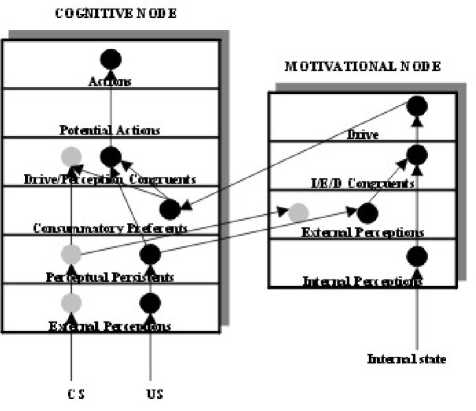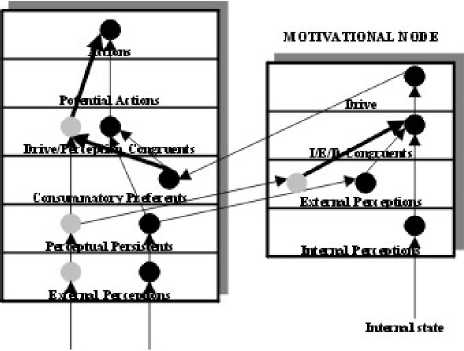
Figure 10. Trajectory of a neutral stimulus before
the conditi oning.
Cognitivenode

cs us
Figure 11. Trajectory of a conditioned stimulus.
The secondary conditioning is another type of associative learning incorporated in
BeCA, as a part of the refinement process of the three created layers. This type of conditioning
can be described in the following terms: if a stimulus that initially is neutral appears before each
presentation of a stimulus that already was conditioned (CS), the neutral stimulus will become
a conditioned stimulus. Thus, the neutral stimulus will be able to evoke the external behaviour
that before evoked the CS, becoming itself also a CS. In other words, in the secondary
conditioning the role of an unconditioned stimulus (US) is played by the previously conditioned
stimulus (CS) (Kandel, 1976; Kandel, 1985).
In BeCA, the events that originate the secondary conditioning process are the same as
the ones already described in the primary classical conditioning. The main difference between
both processes of conditioning can be explained in the following terms: In primary classical
conditioning, the stimulus that plays the role of the conditioner is by nature an US. This US is
able to evoke an external behaviour without the need of a previous learning process
(conditioning). This means that the behavioural columns have been previously established. The
trajectories of the columns are given by the high values of the coupling strengths of the
elementary behaviours associated with each column. In the secondary conditioning, the
stimulus that plays the conditioner role is a CS, this is, a stimulus that initially was neutral but
that was conditioned by an US in a previous process of primary classical conditioning. Although
for this CS the behavioural columns have already been created as well, these were not
preestablished, but were created through the process of primary classical conditioning instead
(learning of the motor action pattern, learning of the biological meaning and learning at a
motivational level). In this way, the second neutral stimulus would be able to form a
behavioural column. The main properties of classical and secondary conditioning in BeCA are
mentioned in Section 3.9.
46
More intriguing information
1. BODY LANGUAGE IS OF PARTICULAR IMPORTANCE IN LARGE GROUPS2. The urban sprawl dynamics: does a neural network understand the spatial logic better than a cellular automata?
3. Improving Business Cycle Forecasts’ Accuracy - What Can We Learn from Past Errors?
4. Education Responses to Climate Change and Quality: Two Parts of the Same Agenda?
5. Moi individuel et moi cosmique Dans la pensee de Romain Rolland
6. Constructing the Phylomemetic Tree Case of Study: Indonesian Tradition-Inspired Buildings
7. The name is absent
8. The name is absent
9. Optimal Taxation of Capital Income in Models with Endogenous Fertility
10. A multistate demographic model for firms in the province of Gelderland